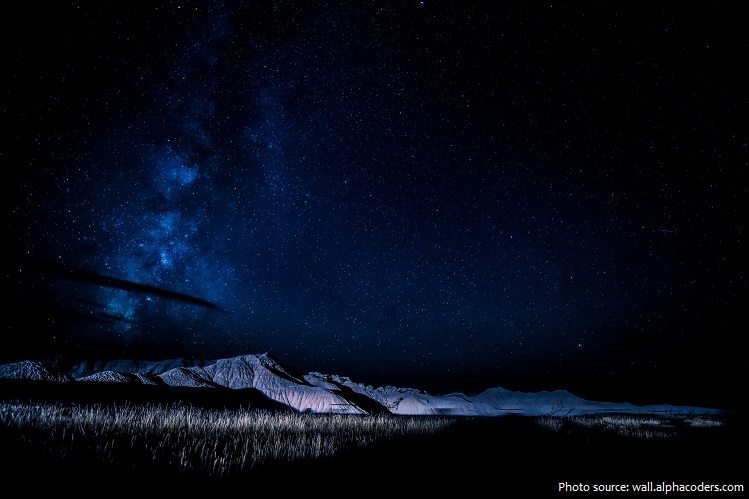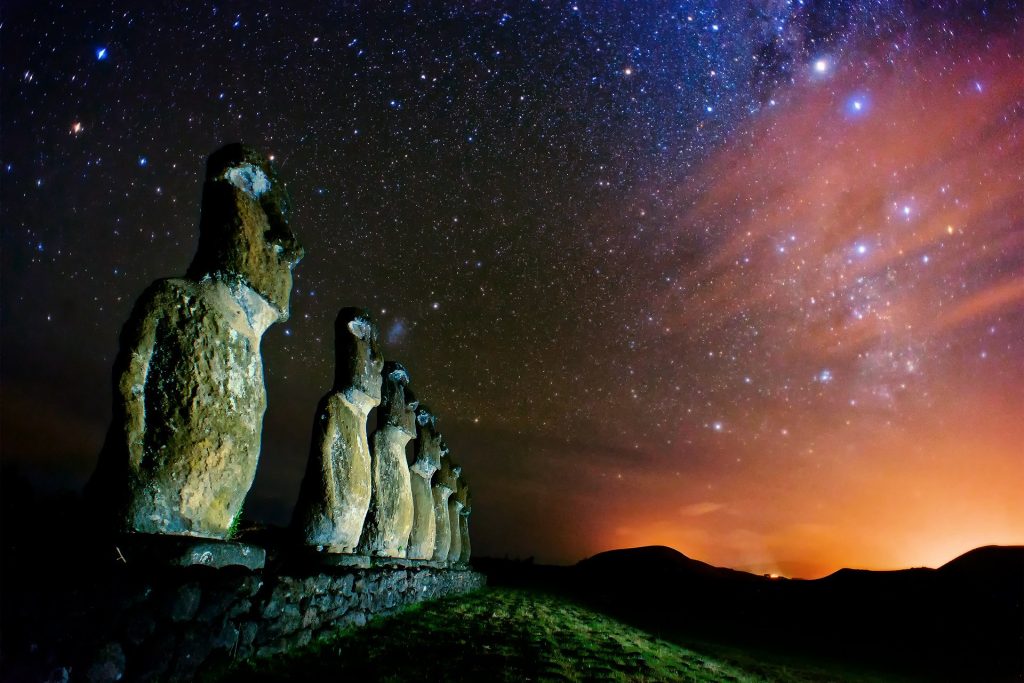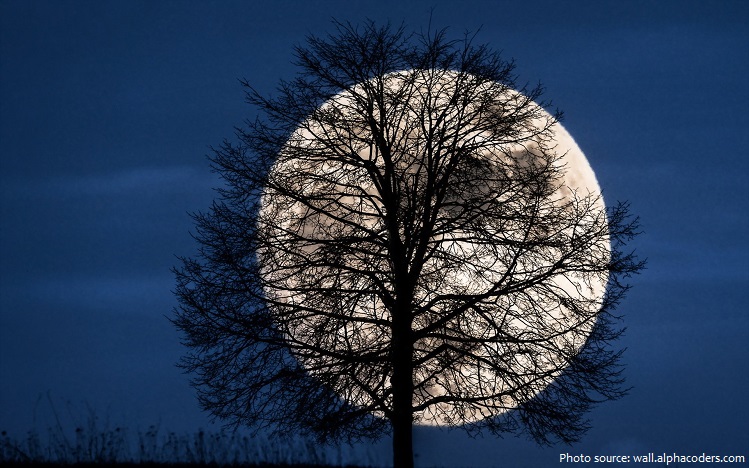
Night also described as night time is the time from dusk to dawn when no sunlight is visible.
The exact time when night begins and ends depends on the location and varies throughout the year, based on factors such as season and latitude.
The word can be used in a different sense as the time between bedtime and morning.
In common communication, the word night is used as a farewell (“good night”) and sometimes shortened to “night”, mainly when someone is going to sleep or leaving.

On Earth, an average night lasts shorter than daytime due to two factors. Firstly, the Sun’s apparent disk is not a point, but has an angular diameter of about 32 arcminutes (32′). Secondly, the atmosphere refracts
sunlight so that some of it reaches the ground when the Sun is below the horizon by about 34′. The combination of these two factors means that light reaches the ground when the center of the solar disk is below the horizon by about 50′. Without these effects, daytime and night would be the same length on both equinoxes, the moments when the Sun appears to contact the celestial equator. On the equinoxes, daytime actually lasts almost 14 minutes longer than night does at the Equator, and even longer towards the poles.
Astronomical night is the period between astronomical dusk and astronomical dawn when the Sun is between 18 and 90 degrees below the horizon and does not illuminate the sky. As seen from latitudes between about 48.56° and 65.73° north or south of the Equator, complete darkness does not occur around the summer solstice because, although the Sun sets, it is never more than 18° below the horizon at lower culmination, -90° sun a angles occur at Tropic of Cancer on December Solstice and Tropic of Capricorn on June Solstice and at equator on equinoxes.

Natural illumination at night is still provided by a combination of moonlight, planetary light, starlight, zodiacal light, gegenschein, and airglow. In some circumstances, aurorae, lightning, and bioluminescence can provide some illumination. The glow provided by artificial lighting is sometimes referred to as light pollution because it can interfere with observational astronomy and ecosystems.
Twilight is the period of night after sunset or before sunrise when the Sun still illuminates the sky when it is below the horizon.

The winter solstice is the day with the fewest hours of sunlight in the whole year, making it the longest night of the year. For the northern half of Earth (the Northern Hemisphere), the winter solstice occurs annually between December 20 and December 23 – for the Southern Hemisphere, the winter solstice occurs between June 20 and June 22.
The summer solstice, which is the shortest night of the year and takes place in the northern hemisphere when the Sun is directly over the Tropic of Cancer. For the northern half of Earth (the Northern Hemisphere), the summer solstice occurs annually on between June 20 and June 22. (For the Southern Hemisphere, the summer solstice occurs between December 20 and December 23.)

An equinox is traditionally defined as the time when the plane of Earth’s equator passes through the geometric center of the Sun’s disk. On the day of an equinox, daytime and nighttime are of approximately equal duration all over the planet. The word “equinox” is derived from the Latin aequinoctium, from aequus (equal) and nox (genitive noctis) (night).
The polar night is a phenomenon where the nighttime lasts for more than 24 hours that occurs in the northernmost and southernmost regions of Earth. This occurs only inside the polar circles. The opposite phenomenon, the polar day, or midnight sun, occurs when the Sun remains above the horizon for more than 24 hours. “Night” is understood as the center of the Sun being below a free horizon. Since the atmosphere refracts sunlight, the polar day is longer than the polar night, and the area that is affected by polar night is somewhat smaller than the area of midnight sun. The polar circle is located at a latitude between these two areas, at approximately 66.5°. While it is day in the Arctic Circle, it is night in the Antarctic Circle, and vice versa.

The term night sky, usually associated with astronomy from Earth, refers to the nighttime appearance of celestial objects like stars, planets, and the Moon, which are visible in a clear sky between sunset and sunrise, when the Sun is below the horizon.
Some animals sleep during the night, while other nocturnal animals including moths and crickets are active during this time. The effects of day and night are not seen in the animal kingdom alone – plants have also evolved adaptations to cope best with the lack of sunlight during this time.
A nocturne is a musical composition that is inspired by, or evocative of, the night. It was first applied to musical pieces in the 18th century, when it indicated an ensemble piece in several movements, normally played for an evening party and then laid aside.

Electric light was invented during 1835. As artificial lighting has improved, especially after the Industrial Revolution, night time activity has increased and become a significant part of the economy in most places. Many establishments, such as nightclubs, bars, convenience stores, fast-food restaurants, gas stations, distribution facilities, and police stations now operate 24 hours a day or stay open as late as 1 or 2 a.m.
The phenomenon of day and night is due to the rotation of a celestial body about its axis, creating an illusion of the sun rising and setting. Different bodies spin at very different rates, however. Some may spin much faster than Earth, while others spin extremely slowly, leading to very long days and nights
In western culture night is strongly associated with Gothic culture.
The opposite of night is day.